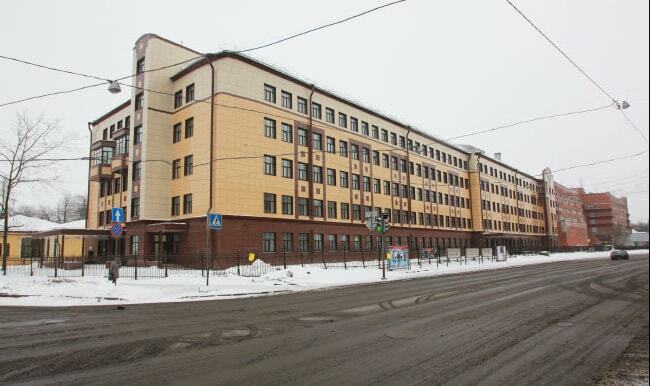The question is how to make a warm floor in the garage with his hands, it is common today. His set-town real estate developers, who are trying to build a warm garage for your car. But before moving on to the analysis of the theme, you need to decide what is meant by the term "warm floor". This insulated floor laying in its structure a heat-insulating material or is a heating system. In order not to break your head, look at both options.
insulated floor
Let's start with this position, because the heater tab is made at the stage of the floor base. First we need to choose a heat-insulating material. Here a small variety, because the floor of the garage is subject to quite severe loads. Therefore, for the required thermal insulation materials or bulk or slab with high density.
The former include:
- expanded clay;
- perlite;
- vermiculite, and more.
The latter include - slabs of expanded polystyrene. With plate heat insulation is not so simple. There need material whose density should be above 150 kg / m³.
insulation technology
Before you insulate the floor in the garage, it is necessary to select a thermal insulation material. Optimally - bulk. Since it is easier to work. The only thing you need to consider is the thickness of the layer to fall asleep. If it is concrete block, it is not less than 20 cm. If perlite or vermiculite, 10-15 cm after compaction.
The sequence of operations:
- Playground between the foundation element is cleaned of debris and vegetation, leveled.
- Produced sand filling 30 cm thick. This size is chosen and it is, because the sand may pass through itself only up moisture at 30 cm. In fact, the sand layer performs a waterproofing function.
- Backfilled rubble layer thickness of 10-12 cm.
- Stacked roofing waterproofing of the foundation, the double-folded, or a polymer film. Home - layout to make a film covered side plane of the basement.
- Backfilled insulating material which is aligned to the horizontal.
- Another waterproofing layer.
- Mounting of the carcass reinforcing steel bars, which is manufactured in the form of a lattice with a mesh of 20x20 cm. Note that the bars are placed on the supply. The goal - to reinforcement was inside a concrete solution. As the supports used stone, brick, metal profiles or special iron or plastic structures that are sold in stores.
- Concrete mortar is poured, which forms the floor of the garage. Its thickness - no less than 10 cm.

Some subtleties of technology. Do reinforcing frame needed? Not always. If the garage built on one car, it is possible to increase the thickness of concrete screed to 20 cm. And it will ensure that the floor under the weight of the car is not cracked and not sag.
When poured concrete floor on the ground, it is recommended between the screed and the basement surface to leave a small gap. It is called the damper or compensation. Therefore, before the concrete floor, it is necessary on lateral surfaces of the foundation structure pave damping tape.
Thermal insulation of expanded polystyrene plates
Whether it is necessary to use this material? If matched to the desired density with the thickness - no less than 10 cm - it is a good option. Polystyrene plates now available with a locking tongue and groove connection, so that the heat-insulating surface will be without gaps and crevices.
The sequence of the process:
- Is filled pillow of sand and gravel.
- Poured thin screed thickness of 5 cm. PP plates stacked only on a solid and dense surface.
- Laid waterproofing.
- Installed insulation boards that can be easily trimmed to the desired dimensions by using a conventional blade or knife.
- The second layer of waterproofing.
- Pouring concrete mortar or on a reinforcing frame or without it.

heating system "warm floor"
What you need to consider before you make a warm floor in his garage? You need to select the very system of heating: electric or water.
Let's start with the first and denote its pros and cons. Benefits include:
- uniform heating of the whole garage area;
- Easy to install and connect, which requires one socket;
- small equipment, where simple devices go;
- Floor heating temperature to + 27C, which is a condition for safe operation of the garage.
As for the drawbacks:
- electricity - the most expensive type of fuel;
- the complexity of the repair, if the cable is at a certain site or burned insulation was broken.
Radiant Floor Heating
In fact, this pipework to the floor, which is connected to a heating boiler or furnace. Features of operation a water heating system Heated floor lies in the fact that inside the water should run at a temperature no greater than + 65C. Optimally - if the boiler is heated by gas. If you are using an electric heating element, it is better to choose an electric radiant floor.
To carry out the installation of water floor heating in the garage with his hands, it is necessary to know some of the nuances and moments. The most important thing - it is to form the basis. They are exactly the same as in the case of insulated floor. The photo below shows how the layers are arranged stacked materials. In that order, and should be carried bookmark floor base in the garage with the installation of pipes floor heating.

What is needed in this warming layer structure. The thing is that the thermal energy coming from the heating system will spread in all directions. And down in the well. To reduce heat loss, insulation laid under heating. You can use bulk, and board materials.
Please note that the thermal insulation layer of poured concrete screed. After its drying, is decomposed on the surface of the reinforcing frame. Just to be attached thereto and the pipe floor heating using a binding wire or plastic collars.

In all mounting technologies important point is the choice of pipe layout schemes on the floor. The thing is that the hot water entering the circuit loses heat as it moves through the pipes. And the farther it is from the boiler, the lower her temperature. Therefore, the optimal variant pipelaying - helix. The photo below shows this model.

Note that half of the circuit, which is considered a serving, is located next to the other half - the return line. Both parts are laid parallel to each other. Thus, the hot water is distributed uniformly over the entire area of the garage floor.
If a small garage (for one car), then come up and the snake scheme. This is the easiest option. Pipe just laid a snake across the plane. One end is connected to the boiler supply. The photo below shows that the distribution circuit is held in a straight line to the opposite wall of the garage, which is connected to the snake.
The second end being a finite element of the piping structure, is directly connected to the boiler. Please note that the floor heating system circulating pump is installed in the return flow around the boiler. Here, the lowest temperature of the coolant. This means that the pump will be subjected to a slight thermal stress, which increases its service life.

step layouts
This is an important parameter that varies in the range of 100-600 mm. Is selected from the calculation of the thermal load on the structure itself of floor heating. It depends on the destination premises, loop length and other factors.
Outset that the plastic pipe to make a bend between the pipes, laid in increments of 100 mm, it is impossible. There will bend, which reduce the tube diameter, thus reducing the efficiency of the heating system. Such a step can be used if the elements are used as the copper tube. Plastic minimum step size - 150 mm.
Standard step laying - 200-300 mm. But at the walls it is recommended to be reduced to 100-150 mm. The goal - to increase the heat around structures, coupled with the street.
Attention! If the garage area of less than 40 m², the warm floor is laid with one loop. If the area is more than a given value, the circuits must be two or more. This is when two stacked circuit which are connected to the boiler through heating individually comb. Thus each loop circuit may be the same or different.

Collector-mixing unit
This is the heart of a warm floor. It can be made with your own hands. But the manifold itself is not expensive, so do not reinvent the wheel again. Buy ready-made design. In this case the main thing - just to pick him up on the thermal load, what you can help experts.
The only note that goes in the collector:
- valves, or valves on the supply and return circuits;
- air vent;
- drain valve for discharging the coolant from the system;
- fittings for connecting pipes to the manifold;
- circulation pump.

Summing up the topic, ask questions, how to make yourself a warm floor in the garage, you must indicate that in fact it is not the most simple construction operation. And in many cases, the owners of garages decide simply to insulate floors, using a thermal insulation material. In addition, a warm floor system - costly in terms of operation. Consumption of even the cheapest source of energy hits the pocket.



